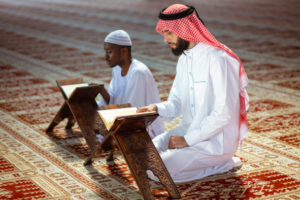
The Islamic faith, a beacon of spiritual guidance for over a billion souls worldwide, manifests its presence through a rich tapestry of beliefs, practices, and traditions. Among its diverse adherents, Sunni and Shia Muslims represent the two principal branches that have shaped Islamic history. While their separation is marked by distinct narratives, the essence of their faith remains deeply intertwined. This essay endeavours to explore the principal differences between Sunni and Shia Islam, not to widen the gap, but rather to illuminate the profound common ground that underpins their theological understanding. It seeks to underscore how their divergences are more historical and political in nature than they are theological, aiming to foster a spirit of unity and peacemaking.
Theological Foundations: A Shared Bedrock
At the heart of both Sunni and Shia Islam lies the unwavering belief in the Oneness of God (Tawhid) and the prophethood of Muhammad (SAW) as the last messenger. This core tenet forms the bedrock of Islamic faith, transcending sectarian lines. Both Sunni and Shia Muslims turn to the Quran as the ultimate source of divine guidance, coupled with the Hadith, which chronicles the Prophet Muhammad’s (SAW) sayings and actions. The Five Pillars of Islam—faith, prayer, almsgiving, fasting, and pilgrimage—further unify Muslims in their worship and devotion to God, showcasing the profound spiritual commonality that underpins their daily lives.
The Roots of Divergence: Historical and Political Dimensions
The divergence between Sunni and Shia Muslims can be traced back to the question of leadership following the Prophet Muhammad’s (SAW) demise. The Sunni tradition upholds the legitimacy of the Prophet’s companions (Sahaba) and the community’s role in choosing their leaders, which led to the establishment of the Rashidun caliphs. In contrast, Shia Islam emphasizes the leadership of Ali ibn Abi Talib and the Imams from his lineage, viewing them as divinely appointed leaders endowed with spiritual authority.
This disagreement, predominantly political at its inception, gradually evolved into complex theological and jurisprudential differences. However, it is essential to remember that these distinctions do not detract from the shared theological underpinnings that both branches deeply revere.
A Journey Toward Unity: Emphasizing Commonalities
While acknowledging the historical and political contexts that have shaped Sunni and Shia identities, it becomes apparent that their theological foundations offer ample ground for unity and dialogue. Both branches exhibit a deep dedication to the principles of justice, equality, and the pursuit of knowledge, echoing the Quranic call for humanity to form a community united in faith.
The commemoration of shared holy days and reverence for the Prophet’s family further exemplify the intertwined spiritual heritage of Sunni and Shia Muslims. Furthermore, the rich tradition of Islamic scholarship across sectarian lines highlights a mutual commitment to exploring the depths of faith, fostering an environment ripe for intellectual and spiritual exchange.
Conclusion: Building Bridges of Understanding
In recognizing the historical and political nature of their differences, Sunni and Shia Muslims can embrace their profound theological commonalities as a foundation for dialogue, understanding, and reconciliation. By focusing on shared values and mutual respect, the Islamic community can transcend sectarian divisions, embodying the Quranic vision of unity in diversity. This essay serves as a call to action for all Muslims to engage in constructive conversations that not only highlight their common theological ground but also pave the way for lasting peace and unity.


